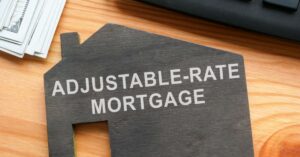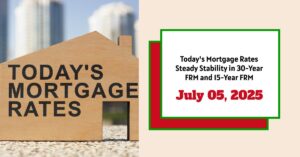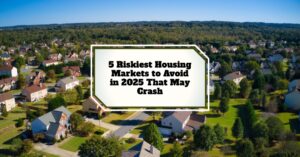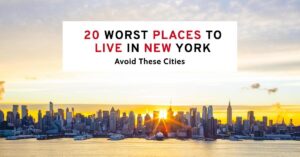As of July 6, 2025, mortgage rates in the United States have remained relatively stable, with the average 30-year fixed mortgage rate at 6.79%, unchanged for the past week. This consistency in mortgage rates indicates a period of calm in a market that has seen significant fluctuations over the last few years. For homeowners considering refinancing or new purchases, understanding the current landscape and future projections is essential.
Today's Mortgage Rates July 6, 2025: Persistent Stability in 30-Year FRM and 15-Year FRM
Key Takeaways
- Current Average Rates:
- 30-Year Fixed: 6.79%
- 15-Year Fixed: 5.85%
- 5-Year ARM: 6.96% (down from the previous week)
- Refinance Rates:
- 30-Year Fixed Refinance: 7.05%
- 15-Year Fixed Refinance: 5.72% (down from the previous week)
- Future Projections: Experts predict that rates will remain steady, with slight fluctuations, averaging around 6.5% by the end of 2025.
Mortgage rates can seem complex, but at their core, they reflect the cost of borrowing money to purchase a home. These rates fluctuate due to various factors, including economic conditions, Federal Reserve policies, and market demand.
Here’s a detailed look at the nation's mortgage rates as of July 6, 2025, provided by Zillow and other reliable sources.
Current Mortgage Rates (July 6, 2025)
| Loan Type | Rate | 1-Wk Change | APR | 1-Wk Change |
|---|---|---|---|---|
| 30-Year Fixed | 6.79% | 0.00% | 7.21% | -0.03% |
| 15-Year Fixed | 5.85% | +0.04% | 6.13% | +0.02% |
| 10-Year Fixed | 5.58% | -0.12% | 5.77% | -0.23% |
| 20-Year Fixed | 6.50% | +0.24% | 6.75% | +0.13% |
| 5-Year ARM | 6.96% | -0.50% | 7.60% | -0.33% |
| 7-Year ARM | 7.50% | +0.36% | 7.73% | -0.09% |
Current Refinance Rates (July 6, 2025)
| Loan Type | Rate | 1-Wk Change | APR | 1-Wk Change |
|---|---|---|---|---|
| 30-Year Fixed Refinance | 7.05% | 0.00% | 7.21% | -0.03% |
| 15-Year Fixed Refinance | 5.72% | -0.20% | 6.13% | +0.02% |
| 5-Year ARM Refinance | 7.09% | 0.00% | – | – |
Understanding the Current Market Conditions
Mortgage rates today provide a picture of a market stabilizing amidst economic uncertainties. After significant highs in 2023, it seems the rates have found a balance. The factors driving mortgage rates include inflation, economic growth, and the policies of the Federal Reserve.
How Does the Federal Reserve Affect Mortgage Rates?
The Federal Reserve plays a crucial role in determining mortgage rates. Their monetary policy decisions, particularly concerning the federal funds rate, have a trickle-down effect on lenders and borrowers. When the Fed increases or decreases interest rates, it affects the cost of borrowing. Here are some specific impacts:
- Lower Rates: When the Fed reduces rates, it typically makes borrowing cheaper for lenders, who may pass on the savings through lower mortgage rates.
- Higher Rates: If the Fed raises rates to combat inflation, borrowing costs increase, often leading to higher mortgage rates for consumers.
Currently, the economic outlook suggests that the Federal Reserve may maintain its stance rather than aggressively changing rates. According to a recent forecast by Fannie Mae, mortgage rates could stabilize around 6.5% by the end of 2025, partially due to an expected slowdown in economic growth.
Projections for Mortgage Rates in 2025
While current rates are stable, the outlook for the next few years shows some predictions about potential changes based on economic forecasts and market dynamics:
- Fannie Mae: Expect rates to settle at around 6.5% by the end of 2025.
- Mortgage Bankers Association: They predict that 30-year rates will hover around 6.8% through September 2025, before gradually floating downward.
- Morgan Stanley: They suggest that rates may decrease alongside falling Treasury yields, though the extent of this drop is uncertain.
Market Impacts on Homebuyers and Refinancing
For buyers and those considering refinancing, the stable mortgage rates present both opportunities and challenges. With the average 30-year fixed-rate remaining around 6.79%, potential homebuyers might find this a good time to lock in a rate, especially as predictions for future increases remain.
Example Calculations for Monthly Payments
To provide clarity, let's break down the financial implications of the current rates on monthly payments. Here’s a look at the monthly costs based on various mortgage amounts at today’s rates:
- For a $300,000 Mortgage:
- 30-Year Fixed at 6.79%:
- Monthly Payment = $1,953
- For a $500,000 Mortgage:
- 30-Year Fixed at 6.79%:
- Monthly Payment = $3,255
- For a $700,000 Mortgage:
- 30-Year Fixed at 6.79%:
- Monthly Payment = $4,557
These calculations make it clear that even a slight change in the rate can significantly affect monthly payments. Given the current average rate, prospective buyers should analyze their budgets when considering homeownership and mortgage options.
Related Topics:
Mortgage Rates Trends as of July 5, 2025
Will Mortgage Rates Drop or Increase in July 2025: Key Predictions
Mortgage Rate Predictions for the Next 3 Years: 2026, 2027, 2028
Reasons for Existing Stability in Mortgage Rates
The stability seen in mortgage rates can be attributed to several factors:
- Economic Activity: With a national growth forecast indicating a slow but steady increase in GDP, the economy appears to be on a firm footing, which can lead to stable borrowing expectations.
- Inflation Trends: As inflation rates begin to stabilize, the resultant effect on mortgage rates could eventually lead to a more favorable borrowing environment.
- Housing Market Dynamics: Increased home sales due to an earlier-than-expected move from buyers pressured by expectations of stagnant rates.
Final Thoughts on the Current Mortgage Market
The mortgage rates for July 6, 2025, reflect a cautious equilibrium in a complex economic landscape. Both prospective homebuyers and those looking to refinance can benefit from understanding the market dynamics and forecasts. The current rates offer a mix of stability and slight variations, which may not present drastic changes in the short term.
As we look at the broader economic picture and anticipate potential shifts in Federal Reserve policies, mortgage holders and potential buyers alike should stay informed and prepare to engage with their financial options intelligently. The market's stability, along with expert predictions, suggests a somewhat optimistic yet cautious path forward for those looking to head into homeownership or refinancing in the near future.
Invest Smarter in a High-Rate Environment
With mortgage rates remaining elevated this year, it's more important than ever to focus on cash-flowing investment properties in strong rental markets.
Norada helps investors like you identify turnkey real estate deals that deliver predictable returns—even when borrowing costs are high.
HOT NEW LISTINGS JUST ADDED!
Connect with a Norada investment counselor today (No Obligation):
(800) 611-3060
Also Read:
- Will Mortgage Rates Go Down in 2025: Morgan Stanley's Forecast
- Mortgage Rate Predictions 2025 from 4 Leading Housing Experts
- 30-Year Fixed Mortgage Rate Forecast for the Next 5 Years
- 15-Year Fixed Mortgage Rate Predictions for Next 5 Years: 2025-2029
- Will Mortgage Rates Ever Be 3% Again in the Future?
- Mortgage Rates Predictions for Next 2 Years
- Mortgage Rate Predictions for Next 5 Years
- Mortgage Rate Predictions: Why 2% and 3% Rates are Out of Reach
- How Lower Mortgage Rates Can Save You Thousands?
- How to Get a Low Mortgage Interest Rate?
- Will Mortgage Rates Ever Be 4% Again?










